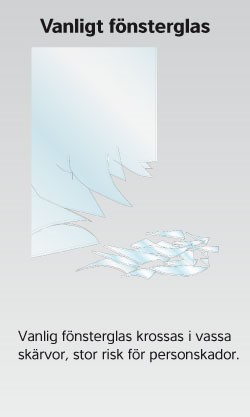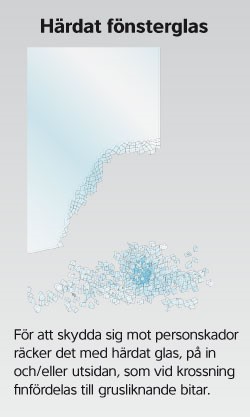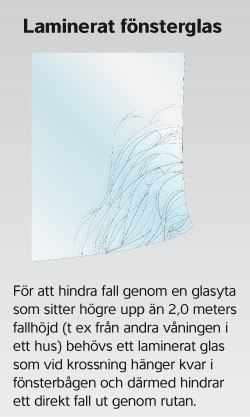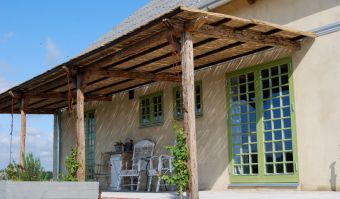News
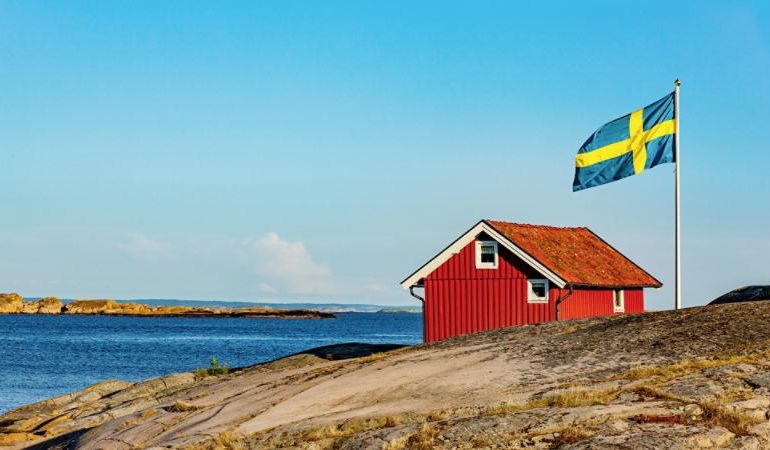 2020-02-10
2020-02-10
Requirements for personal safety in Swedish building regulations - Boverkets byggregler (BBR).
Swedish building regulations Requirements for personal safety in Swedish building regulations - Boverkets byggregler (BBR). This information provides assistance and a guide when choosing glass and accessories to meet the requirements of building codes section 8, "Safety of use". Subject to changes in provisions, standards and rules that will be added later. Swedish building regulations BBR is a mandatory set of regulations setting minimum requirements for buildings. The regulations apply to all types of buildings, both in new construction and in modification of existing buildings. The Municipal Construction Council is a supervisory body and is responsible for ensuring compliance with regulations. WARNING! The customer (ordering party) is responsible for compliance with BBR.
Protective glass
Section 8 of the BBR imposes requirements for personal safety in contact with glass, including protection against falling through the glass and protection against damage during cutting.
Requirements vary depending on the type of building, housing is different, other areas where children can be, entrances and communication areas, as well as schools and kindergartens. Here is a summary of the most important principles.
BBR 8:35 Glass in buildings
Glass that is unsecured and positioned such that persons at risk of contact with them should be designed so that the risk of injury is limited. Glass surfaces and fixings should be able to withstand dynamic human impact.
BBR 8: 352 Protection against falling through glass
Glass surfaces must be designed in such a way that the risk of falling through the glass surface is limited. The risk of falling out is considered to occur if the height of the sheet is greater than 2.0 meters from the ground or floor and the distance from the floor or ground to the glass surface is less than 0.6 meters. See point 4 in the following illustration.
BBR 8: 353 Protection against injury when cutting
Glass surfaces must be designed in such a way that the risk of injury is limited. This applies if the distance from the bottom of the glass to the floor or ground is less than:
- 0.6 meters in homes
- 0.8 meters in other rooms where children up to preschool age can stay without constant adult supervision
- 1.5 meters in the entrances and communication areas (according to the ICC Säkerhet applies to all entrances, including apartments)
- 1.5 meters in schools and kindergartens
See point 1 and 2 in the illustration below.
Depending on the applicable requirements, ordinary glass, tempered glass or laminated glass may be required:
|
|
|
|
Safety of use
Here is an excerpt from BBR regarding child safety in windows and window doors.
8:10:12 Windows that open, balcony doors and the like *
In rooms where children can be expected to live without constant adult supervision, windows that open, balcony doors and the like should be equipped with safety devices in accordance with section 8: 231 (BBR).
* BBR 8:10:12 usually applies even after changing the building, but you don't have to follow the rules if there are special reasons, for example, if it would harm the cultural value of the building.
8: 231 Openable windows, balcony doors and the like
In rooms where there may be children, openable windows whose lower edge is less than 1.8 meters above the floor must be equipped with safety devices, blocking devices or other safety devices limiting the risk of children falling out. Balcony doors and openable windows in which the distance between the glass surface and the floor is less than 0.60 meters should be equipped with safety equipment and locking devices that prevent children from opening and passing through the door or window. Safety devices do not have to be located on the patio windows or doors on the ground floor.
example
The above requirements are particularly appropriate to prevent accidents involving children and means that approved child restraints must be placed on:
- opening windows placed at a height of 2 meters or more
- terrace windows or doors that lead to a balcony or patio located at a height of more than 2 meters above ground level

 Polski
Polski Angielski
Angielski Niemiecki
Niemiecki